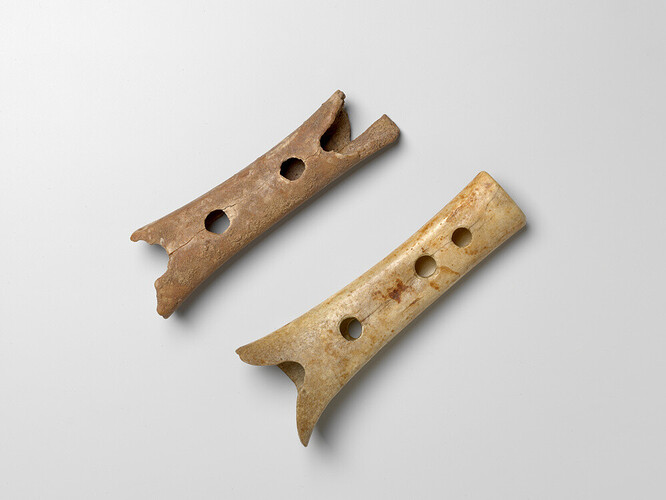Sorry I missed this yesterday. I wish you wouldn’t paint yourself into such an all-or-nothing interpretive corner. It’s the same thing YEC does. You’re obviously coming from the opposite direction, so no shade. Just an observation.
Right.
Sure. I’d suggest it was no different for the authors/editors of the Pentateuch, as well as Paul and the Patriarchs of the church. All of them wrote from the perspective of the current “science” (natural philosophy) of their time. That’s @DOL’s point in his book on ancient science in the Bible, although I don’t recall if he addresses the NT or early church.
Understanding any text starts with understanding the genre and historical context of its composition (or final form). The choice isn’t necessarily between science or fantasy. Many truths aren’t scientific truths, and if you’re a fan of fantasy, you know that genre reveals truths about the human condition too. I’d suggest Genesis reveals deeper truths than Tolkien, Lewis, or L’Engle, because our truly existential questions aren’t (and can’t be) answered by science.
Ask yourself: what sort of question are you asking? Is it a question about the physical world or natural history? Then the proper place to start is with history and the natural sciences. Everyone who has tried answering such questions by starting with the biblical text and reaching “logical conclusions” from there has failed miserably at applying those notions to “reality.” To be more specific, both you and @SkovandOfMitaze disavow literal interpretation, but you both start with your interpretation of Gen. 4 and assume history matches that evidence. Genesis 1-11 isn’t intended to answer questions of science or history. I think we can all agree to that. What I’m trying to point out is you guys are cherry-picking a few verses as “historical” and hanging your hats on an inference made from a mythological text.
Perhaps consider that Cain and Abel weren’t literal, historical individuals, and Cain’s worries about people “east of Eden” are no more historical than the claim that Cain was the first builder of the first city (10,000+ yrs ago), yet the origin of stringed instruments and pipes comes five generations later in his lineage. Here’s a pic of a Neanderthal bone flute from 60,000 years ago.
Regarding psychology, I don’t disagree. The biblical authors were keen observers of the human psyche. That’s why I argue that Gen 2-3 traces the path of human moral development from childish ignorance (innocence) to moral maturity. I trace that scientific path first, then make metaphorical connections to human evolution. Quoting myself:
In his 1932 classic, The Moral Development of the Child, Jean Piaget studied
children of various ages playing games and concluded that the younger ones
regarded rules “as sacred and untouchable, emanating from adults and lasting
forever. Every suggested alteration strikes the child as a transgression.”87 This
matches quite well the attitude of many interpreters toward the command not to
eat from the Tree of Knowledge. The first humans should have accepted it without
question, obeyed it and, presumably, lived forever in paradise. But is unquestioned
acceptance of the rule truly a mature moral choice? That condition belongs to the
state of childhood.
Updating Piaget’s work, developmental psychologist William Kay observed,
“A young child is clearly controlled by authoritarian considerations, while an adolescent
is capable of applying personal moral principles. The two moralities are
not only clearly distinct but can be located one at the beginning and the other at
the end of a process of moral maturation.”88
Not really. It’s more about alienation from God and reconciliation in Christ, and I actually think there’s plenty of room for your theory of sin as “habit” in scripture and the historical record. After all, do any of us remember our own first “morally culpable” sin, or is it a fuzzy line between childhood and adolescence? I just don’t agree with your either/or.
It also makes no sense in Genesis 2 that the animals are created and named by ha’adam before the woman is created. It makes no sense that the woman is sentenced to pain in childbirth, which appeared with big brains, bipedalism and narrower hips around 600,000 years ago, and the man is sentenced to agricultural labor, which appeared around 12,000 years ago.
We’re talking about plot holes and anachronisms in a highly condensed, ancient text. It’s no more historical than a global flood or people living 900 years.
Nah. It’s blatantly obvious that the story is mythological, so we can’t extrapolate from that to actual history. Did the Nephilim actually exist? They blatantly do within the text.
There’s evidence of an editor bringing them together into a single overarching story, which is the repeated refrain of “toledot.”
Israel’s oral traditions couldn’t be written down until Hebrew became a written language in the Iron Age. What sort of time lapse are we talking? 10,000 years? Here’s an interesting popular science piece on the subject:
What are the limits of such ancient memories? For what length of time can knowledge be transferred within oral societies before its essence becomes irretrievably lost? Under optimal conditions, as suggested by science-determined ages for events recalled in ancient stories, orally shared knowledge can demonstrably endure more than 7,000 years, quite possibly 10,000, but probably not much longer.

